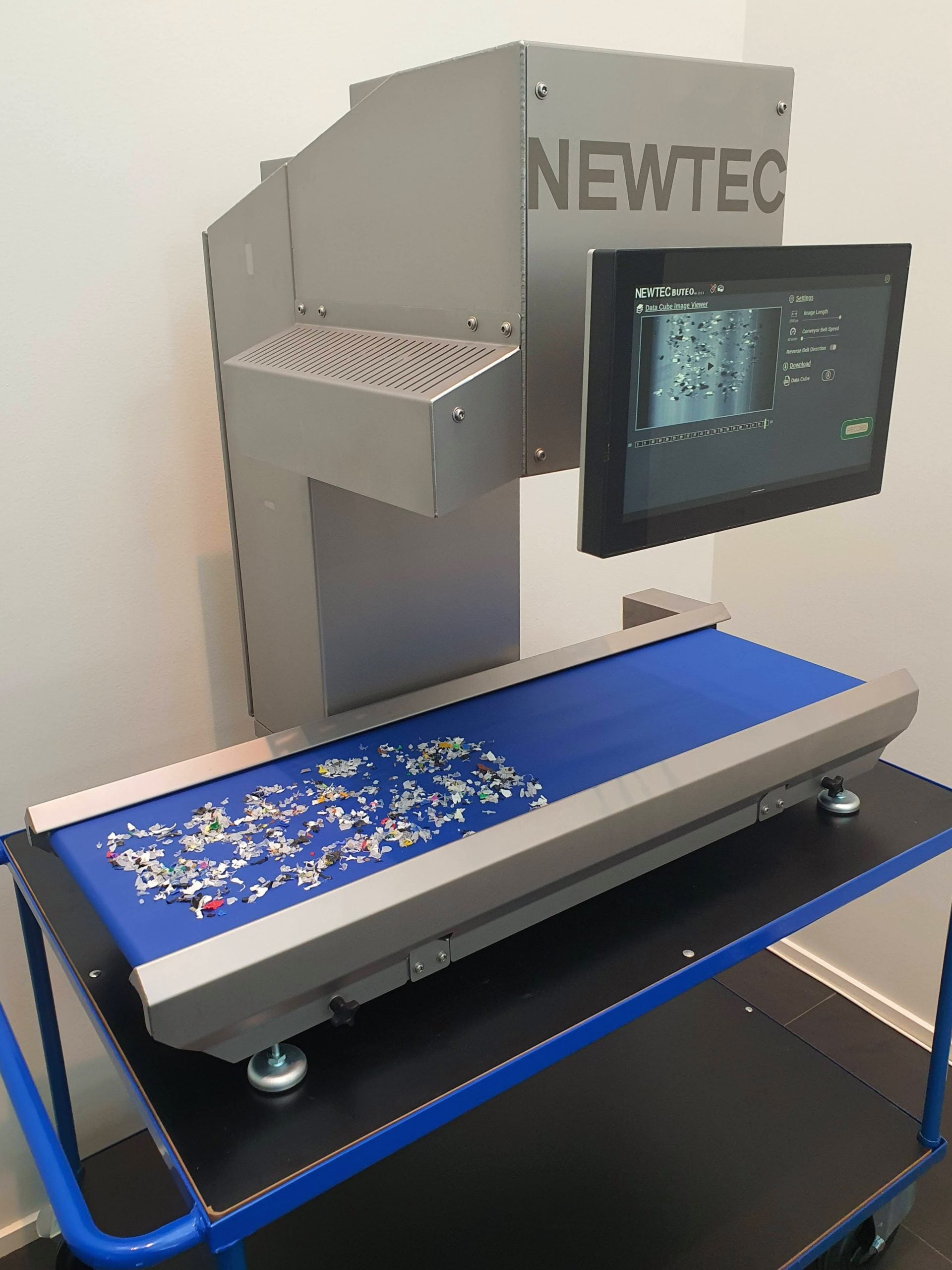
A Danish trio of partners is developing super-high-resolution, hyperspectral cameras that can determine the chemical composition of plastic waste and the different additives. The technology will have a huge impact on future plastics recycling.
Today, plastic is difficult to recycle because plastic waste is a mishmash of many different types of polymers with different chemical compositions as well as different additives such as dyes and flame inhibitors that give a plastic product its specific properties.
With a kr7.9m grant from Innovation Fund Denmark’s Grand Solutions programme (total budget of kr11.3m), Aarhus University (AU), University of Southern Denmark (SDU) and the company Newtec Engineering A/S have launched a project to develop a unique camera technology that will make it much easier to recycle plastic materials.
The aim is to develop a high-resolution, hyperspectral camera with a spectral range from around 400nm to 1,900nm and a desired resolution of just 2nm.
“It’s an extremely ambitious goal for this technology, and it places strict demands on the optical components in the camera technology. Besides a uniquely high resolution, we’re also aiming to optimise the camera optics for light spectra that are crucial for analysing plastics. We’ll do this part in collaboration with leading optics experts at SDU and Newtec who have unique expertise in camera development,” says associate professor Mogens Hinge from the Department of Biological and Chemical Engineering at Aarhus University.
Mogens Hinge and the research group, Plastics and Polymer Engineering are leading the project, and they have previously demonstrated that hyperspectral camera technology can revolutionise plastics recycling. The higher the resolution and the wider spectral area of the hyperspectral camera, the better.
The goal of the new project, which is called New Hyperspectral Camera technology for material identification, NewHC, is a spectral resolution and range high enough for the camera to reveal unwanted fire retardants and pigments in the plastic that may be banned or harmful so that they can be removed before recycling.
“It’s important that we separate plastics into as pure fractions as possible if we are to increase the rate of recycling. At least 95% purity in the plastic fractions is currently required; preferably higher. For this reason, we’re aiming to automate fast and efficient plastic recognition with this technology. By doing this, we hope we can push the boundaries for future recycling of plastic waste and thereby reduce the need to make new plastics,” says Bjarke Jørgensen, head of research & development at Newtec Engineering A/S.
The new camera technology will be developed by the Plastics and Polymer Engineering research group (AU), NanoSyd (SDU), which is internationally recognised for research in optics, and Newtec Engineering A/S, which is the market-leading machine manufacturer specialising in advanced camera technology.
Once the technology has been developed, it will be installed in a specially constructed waste separation plant in collaboration with Newtec Engineering A/S.
“We’ll be developing a unique type of hyper-spectral camera with an amazing spectral resolution. And by using a spatio-spectral analysis of signals that we’re developing to be based on artificial intelligence, we plan to push the boundaries further with regard to detecting additives in plastic waste,” says Mogens Hinge.
The project has a total budget of kr11.3m and it will run for three years. Innovation Fund Denmark is investing kr7.9m.
Facts
A study published in the journal Science Advances in 2017 shows that only 9 per cent of the 8.3 billion tonnes of plastic waste that has been produced since the 1950s has been reused. 12% has been converted into energy via incineration, while almost 80% is in landfills or in nature.
In Denmark, 31% of plastic packaging is reused. Looking at just industrial packaging, 64% is recycled, while 15% of plastic packaging from households is separated. In 2015, Denmark separated 38,000t of plastic packaging from waste. Danish households accounted for 18,000t of plastic packaging, the service sector 10,000t and the industry 8,000t. The remaining 2,000t came from agriculture and other sources.
Source: Danish Environmental Protection Agency, PlasticsEurope
Hyper-spectral imaging is an advanced camera technique that captures images with many more specific colour channels than just the three (red, green and blue) in a regular RGB camera.
Partners
Newtec is a market-leading machine manufacturer in weighing, packing and optical quality and size sorting of food products; primarily in the fruit and vegetable industry.
Plastics and Polymer Engineering (AU) is a leading research group within plastics manufacture, modification, analysis and classification.
NanoSyd (SDU), which is part of the Mads Clausen Institute, specialises in optical components, spectroscopy and diffractive optics.
Contact
Mogens Hinge, associate professor, Aarhus University
+45 22770555, hinge@bce.au.dk

